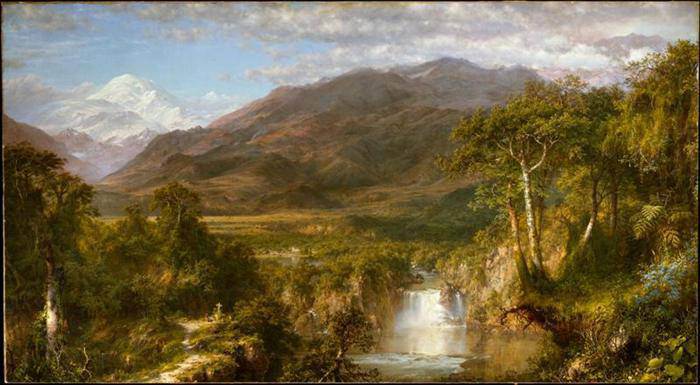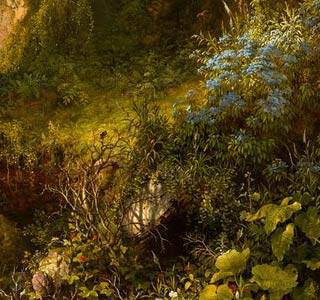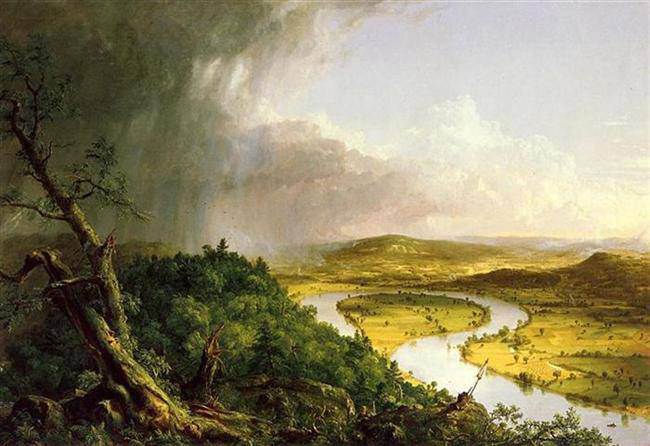Frederic Edwin Church · The Heart of the Andes

Frederic Edwin Church (American, 1826–1900), 1859. Oil on canvas, 167.9 cm × 302.9 cm (68⅛ in × 119¼ in). New York, Metropolitan Museum
America’s greatest landscape painter, Frederic Edwin Church, represents the culmination of the Hudson River School: he had Thomas Cole’s love for the landscape, Asher Brown Durand’s romantic lyricism, and Albert Bierstadt’s grandiloquence, but was definitely braver and technically more gifted than anyone of them.
Church’s early works (such as “Home by the Lake”, 1852) were clearly inspired by his master Thomas Cole, but then Church, inspired by the adventures of Alexander von Humboldt, traveled to South America searching new landscapes to paint. After returning to New York, Church painted “The Heart of the Andes”, possibly his most famous work.
“The Heart of the Andes” does not depict a specific place in South America, but an idealized landscape, a compendium of memories from the artist’s journey to the South. At the background we can see the snow-capped Mount Chimborazo, a volcano in Ecuador that Church painted in several works. In the midst of the vegetation in the foreground a wooden cross can be spotted. Despite the enormous size of the canvas, the level of detail is spectacular, and Church has paid special attention to the flowers and exotic birds.
Church exhibited “The Heart of the Andes” at his studio in early 1859. The work was enthusiastically received, and more than 12,000 people paid the admission fee to admire the painting. Mark Twain said that “The Heart of the Andes” was “in my mind now, and the smallest feature could not be removed without my detecting it”. After the exhibition, Church sold the painting for $10,000 (then the highest price ever paid for a work by a living American artist) to Margaret Dows, who in 1909 bequeathed the painting to the Metropolitan Museum of Art in New York.
G. Fernández – theartwolf.com

“The Heart of the Andes”, detail of the lower right corner
Follow us on:


